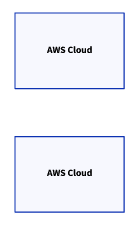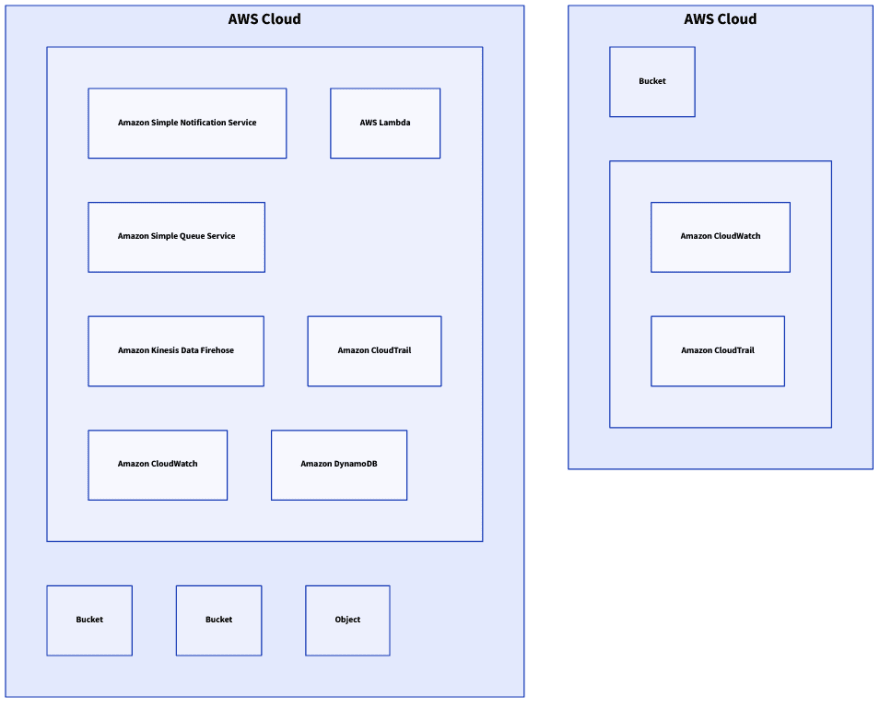We all love diagrams. A quick peek allows us to quickly create a mental map, no matter whether it's cloud architecture, a database schema, or a sequence diagram.
But creating diagrams is hard. It's hard to keep them up to date, it's hard to collaborate on them, and it's hard to make them look good.
There are a lot of tools for creating diagrams, but probably the most popular one is draw.io. It's a great tool, but it's not without its flaws.
It gives you a lot of freedom, but also bothers you with the little details.
Since we often use diagrams to describe our infrastructure, why don't we learn from the DevOps world and treat them as code?
What if next to our Infrastructure as Code (IaC) we could also have Diagrams as Code (DaC)?
What is D2?
In the words of the creators, D2 is a domain-specific language (DSL) that stands for Declarative Diagramming. Declarative, as in, you describe what you want diagrammed, it generates the image.
In other words, D2 gives you the ability to write diagrams as code, and then use a CLI tool to compile and render them into SVG or PNG images.
The CLI tool supports live reload, so the workflow is nearly as smooth as working with other diagram tools.
Get started with D2
You can install the D2 CLI tools by following the instructions on the D2 website.
After installing the CLI, you should now be good to go. The most important command is:
$ d2 -w input.d2 output.svg
This will run a live reload server that will watch for changes in the input.d2 file and render the output to output.svg.
It will also open a browser window with the rendered diagram. For most cases this is all you need, however it is also worth noting
that you can change the theme of the diagram by passing the --theme/-t parameter. This parameter is the ID of the target theme, which is not
showcased in the D2 docs, but you can find a list of all available themes in the D2 repo.
# Renders with the "Shirley temple" theme
$ d2 -w input.d2 -t 102 output.svg
Creating a diagram with D2
Using D2 to create a diagram is very simple. To present this, we will try to recreate the example AWS architecture diagram from draw.io examples.
We start by defining the containers.
aws_1: AWS Cloud {}
aws_2: AWS Cloud {}
Here, aws_1 and aws_2 are the IDs of the containers. We can then later use those IDs to reference the objects inside (or the containers themselves).
Next, we define the objects inside the containers (and the nested containers).
aws_1: AWS Cloud {
obj: Object
bucket_1: Bucket
bucket_2: Bucket
subsystem: "" {
cloudwatch: Amazon CloudWatch
cloudtrail: Amazon CloudTrail
sns: Amazon Simple Notification Service
sqs: Amazon Simple Queue Service
lambda: AWS Lambda
kinesis: Amazon Kinesis Data Firehose
dynamo: Amazon DynamoDB
}
}
aws_2: AWS Cloud {
bucket: Bucket
subsystem: "" {
cloudwatch: Amazon CloudWatch
cloudtrail: Amazon CloudTrail
}
}
We have defined all the objects inside the containers. Now we can make the connections between them.
This is by far the part that is most troublesome when using traditional diagram tools, since with each update of the diagram you have to make sure
that the connections are still clear and correct. In D2, this is a breeze.
aws_1.bucket_1 -> aws_2.bucket
aws_2.subsystem.cloudwatch -> aws_1.subsystem.cloudwatch: Monitor template
aws_1: AWS Cloud {
obj: Object
bucket_1: Bucket
bucket_2: Bucket
obj -> bucket_1
bucket_1 -> subsystem.cloudtrail
subsystem.kinesis -> bucket_2
subsystem: "" {
cloudwatch: Amazon CloudWatch
cloudtrail: Amazon CloudTrail
sns: Amazon Simple Notification Service
sqs: Amazon Simple Queue Service
lambda: AWS Lambda
kinesis: Amazon Kinesis Data Firehose
dynamo: Amazon DynamoDB
cloudtrail -> cloudwatch -> sns -> sqs -> lambda
lambda -> dynamo
lambda -> kinesis
}
}
aws_2: AWS Cloud {
bucket: Bucket
bucket -> subsystem.cloudtrail
subsystem: "" {
cloudwatch: Amazon CloudWatch
cloudtrail: Amazon CloudTrail
cloudtrail -> cloudwatch
}
}
And that's it! The specified objects are connected automatically. But the diagram still looks a little raw - let's add some icons to make it look better.
aws_1.bucket_1 -> aws_2.bucket
aws_2.subsystem.cloudwatch -> aws_1.subsystem.cloudwatch: Monitor template
aws_1: AWS Cloud {
obj: Object
obj.shape: circle
obj.style.stroke: "#62a638"
bucket_1: Bucket
bucket_1.shape: image
bucket_1.icon: https://raw.githubusercontent.com/exler/diagrams/main/icons/aws/s3/s3.svg
bucket_2: Bucket
bucket_2.shape: image
bucket_2.icon: https://raw.githubusercontent.com/exler/diagrams/main/icons/aws/s3/s3.svg
obj -> bucket_1
bucket_1 -> subsystem.cloudtrail
subsystem.kinesis -> bucket_2
subsystem: "" {
cloudwatch: Amazon CloudWatch
cloudwatch.shape: image
cloudwatch.icon: https://raw.githubusercontent.com/exler/diagrams/main/icons/aws/cloudwatch/cloudwatch.svg
cloudtrail: Amazon CloudTrail
cloudtrail.shape: image
cloudtrail.icon: https://raw.githubusercontent.com/exler/diagrams/main/icons/aws/cloudtrail/cloudtrail.svg
sns: Amazon Simple Notification Service
sns.shape: image
sns.icon: https://raw.githubusercontent.com/exler/diagrams/main/icons/aws/simple_notification_service/sns.svg
sqs: Amazon Simple Queue Service
sqs.shape: image
sqs.icon: https://raw.githubusercontent.com/exler/diagrams/main/icons/aws/simple_queue_service/sqs.svg
lambda: AWS Lambda
lambda.shape: image
lambda.icon: https://raw.githubusercontent.com/exler/diagrams/main/icons/aws/lambda/lambda.svg
kinesis: Amazon Kinesis Data Firehose
kinesis.shape: image
kinesis.icon: https://raw.githubusercontent.com/exler/diagrams/main/icons/aws/kinesis_data_firehose/firehose.svg
dynamo: Amazon DynamoDB
dynamo.shape: image
dynamo.icon: https://raw.githubusercontent.com/exler/diagrams/main/icons/aws/dynamodb/dynamodb.svg
cloudtrail -> cloudwatch -> sns -> sqs -> lambda
lambda -> dynamo
lambda -> kinesis
}
}
aws_2: AWS Cloud {
bucket: Bucket
bucket.shape: image
bucket.icon: https://raw.githubusercontent.com/exler/diagrams/main/icons/aws/s3/s3.svg
bucket -> subsystem.cloudtrail
subsystem: "" {
cloudwatch: Amazon CloudWatch
cloudwatch.shape: image
cloudwatch.icon: https://raw.githubusercontent.com/exler/diagrams/main/icons/aws/cloudwatch/cloudwatch.svg
cloudtrail: Amazon CloudTrail
cloudtrail.shape: image
cloudtrail.icon: https://raw.githubusercontent.com/exler/diagrams/main/icons/aws/cloudtrail/cloudtrail.svg
cloudtrail -> cloudwatch
}
}
With the icons added, the diagram is much more intuitive and easier to understand. Sadly, D2 does not support filesystem paths for icons, so you have to use remote URLs.
Nevertheless, the diagram is finished and looks great.
For now, D2 has limited capability of styling, so we are not able to fully reproduce the original diagram. However, we just wrote an easily reproducible and maintainable diagram in less than 70 LOC!
Summary
I hope that this post has convinced you that Diagrams as Code fit the modern's software architect's tech stack perfectly.
They are easy to write, easy to maintain, and easy to share. Give them a go when you have the chance!












Top comments (0)